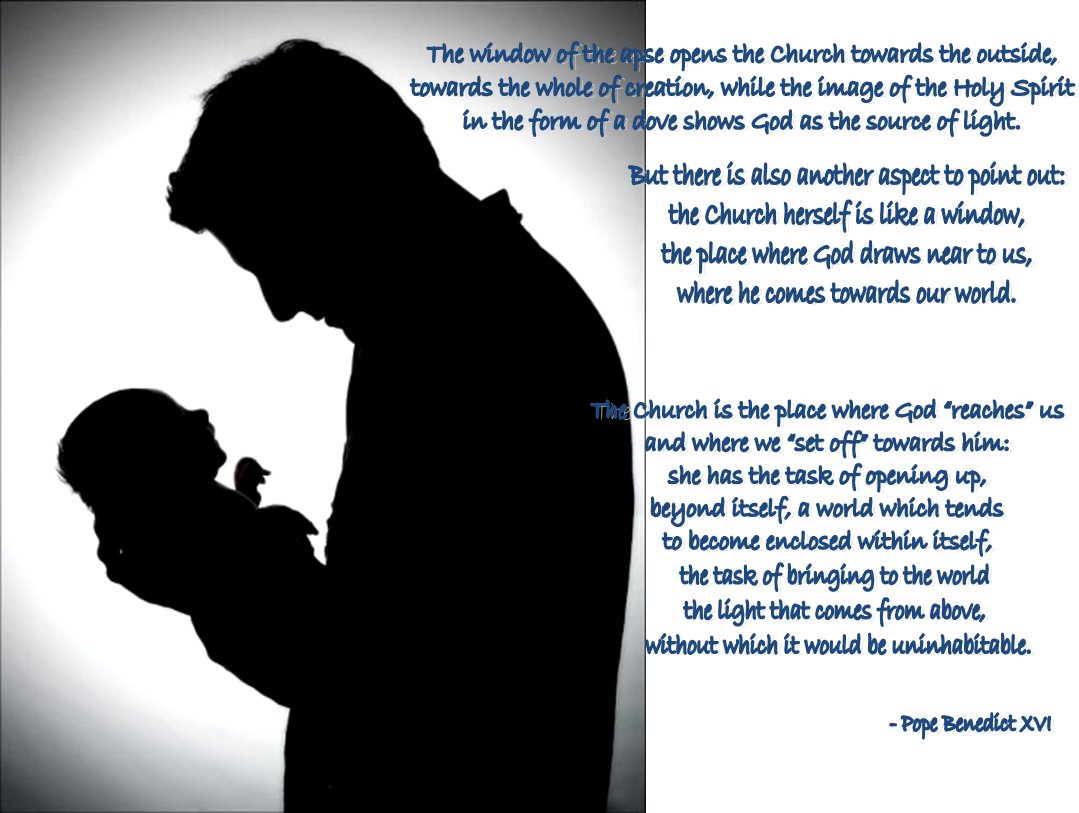
|
By virtue of the transforming experience of the Good Shepherd, Peter described himself, in his Letter to the Churches of Asia Minor, as "a witness of the sufferings of Christ as well as a partaker in the glory that is to be revealed" (1 Peter 5: 1). He urges "the elders" to tend the flock of God and become examples to it (cf. 1 Peter 5: 2-3). Today, dear friends, this exhortation is addressed particularly to you, whom the Good Shepherd has wished to associate in the most eminent way with the ministry of Peter's Successor. Be faithful to your mission and ready to lay down your lives for the Gospel. The Lord is asking this of you, and the Christian people who have gathered around you today with joy and affection expect it of you.
May this prayer, which never ceases to flow from the Good Shepherd's heart, always be your strength! Have no doubt that just as it was for Christ and for Peter, so it will be for you: your most effective witness will always be one that is marked by the Cross. The Cross is God's chair in the world. On it Christ has offered humanity the most important lesson, that of loving one another as he has loved us (cf. John 13: 34): even to the ultimate gift of oneself.
The Mother of Christ and of the disciples, Mary Most Holy, always stands beneath the Cross. The Lord entrusted us to her when he said: "Woman, behold, your son!" (John 19: 26). Since the Blessed Virgin, Mother of the Church, protected Peter and the Apostles in a special way, she will not fail to protect the Successor of Peter and his collaborators. May this consoling certainty encourage you not to be afraid of trials and difficulties. But, reassured by God's constant protection, let us obey together the command of Christ, who vigorously asked Peter, and with him the Church, to put out into the deep: "Duc in altum" (Lk 5: 4). Yes, dear Brothers, let us put out into the deep, let us cast our nets for the catch and let us "go forward in hope!" (Novo millennio ineunte, n. 58).
Christ, the Son of the living God, is the same yesterday and today and forever. Amen!
Acknowledgment: We thank the Vatican Publisher for allowing us to publish the Homily of Blessed Pope John Paul II, so that it could be accessed by more people all over the world; as a source of God’s encouragements to all of us. |
|
HOMILY OF HIS HOLINESS BENEDICT XVI Vatican Basilica
Dear Cardinals,
|

|
The window of the apse opens the Church towards the outside, towards the whole of creation, while the image of the Holy Spirit in the form of a dove shows God as the source of light. But there is also another aspect to point out: the Church herself is like a window, the place where God draws near to us, where he comes towards our world. The Church does not exist for her own sake, she is not the point of arrival, but she has to point upwards, beyond herself, to the realms above. The Church is truly herself to the extent that she allows the Other, with a capital “O”, to shine through her – the One from whom she comes and to whom she leads. The Church is the place where God “reaches” us and where we “set off” towards him: she has the task of opening up, beyond itself, a world which tends to become enclosed within itself, the task of bringing to the world the light that comes from above, without which it would be uninhabitable. The great bronze throne encloses a wooden chair from the ninth century, which was long thought to be Saint Peter’s own chair and was placed above this monumental altar because of its great symbolic value. It expresses the permanent presence of the Apostle in the Magisterium of his successors. Saint Peter’s chair, we could say, is the throne of truth which takes its origin from Christ’s commission after the confession at Caesarea Philippi. The magisterial chair also reminds us of the words spoken to Peter by the Lord during the Last Supper: “I have prayed for you that your faith may not fail; and when you have turned again, strengthen your brethren” (Luke 22:32). |
|
The chair of Peter evokes another memory: the famous expression from Saint Ignatius of Antioch’s letter to the Romans, where he says of the Church of Rome that she “presides in charity” (Salutation, PG 5, 801). In truth, presiding in faith is inseparably linked to presiding in love. Faith without love would no longer be an authentic Christian faith. But the words of Saint Ignatius have another much more concrete implication: the word “charity”, in fact, was also used by the early Church to indicate the Eucharist. The Eucharist is the Sacramentum caritatis Christi, through which Christ continues to draw us all to himself, as he did when raised up on the Cross (cf. John 12:32). Therefore, to “preside in charity” is to draw men and women into a eucharistic embrace – the embrace of Christ – which surpasses every barrier and every division, creating communion from all manner of differences. The Petrine ministry is therefore a primacy of love in the eucharistic sense, that is to say solicitude for the universal communion of the Church in Christ. And the Eucharist is the shape and the measure of this communion, a guarantee that it will remain faithful to the criterion of the tradition of the faith.
Continue next page ...
|
